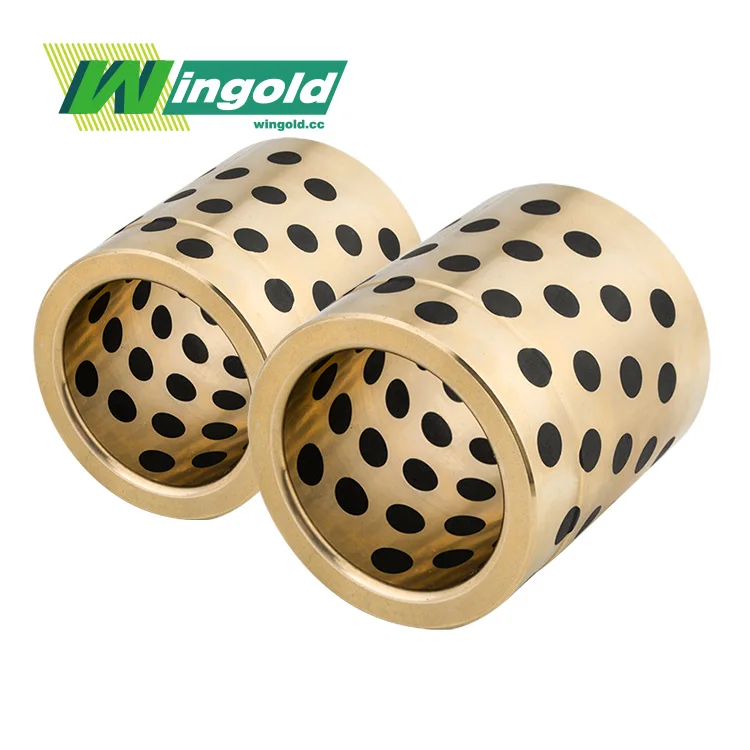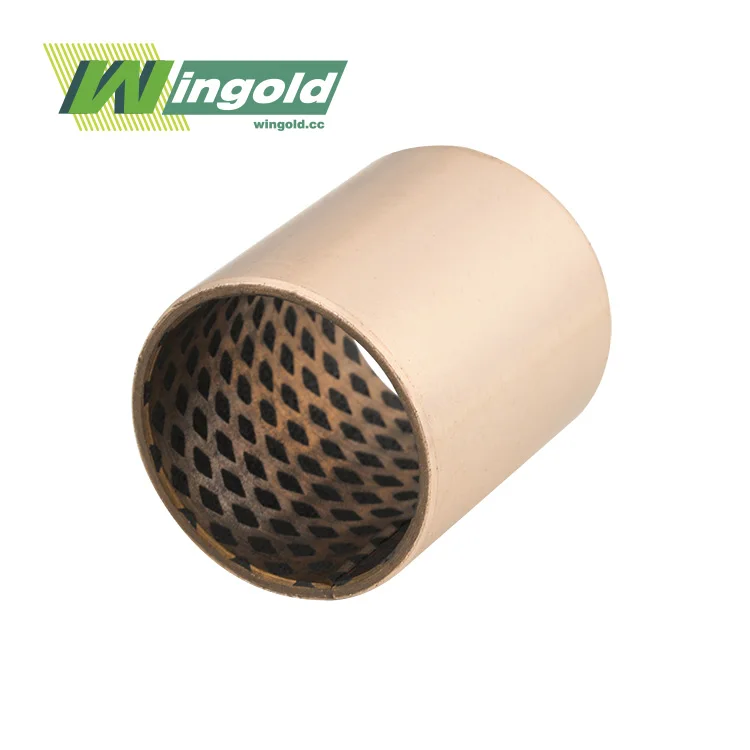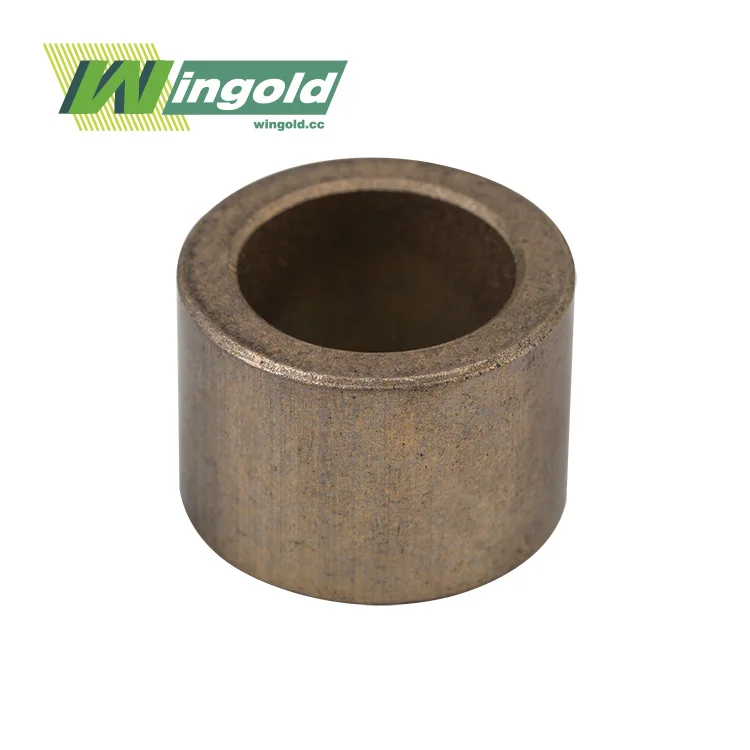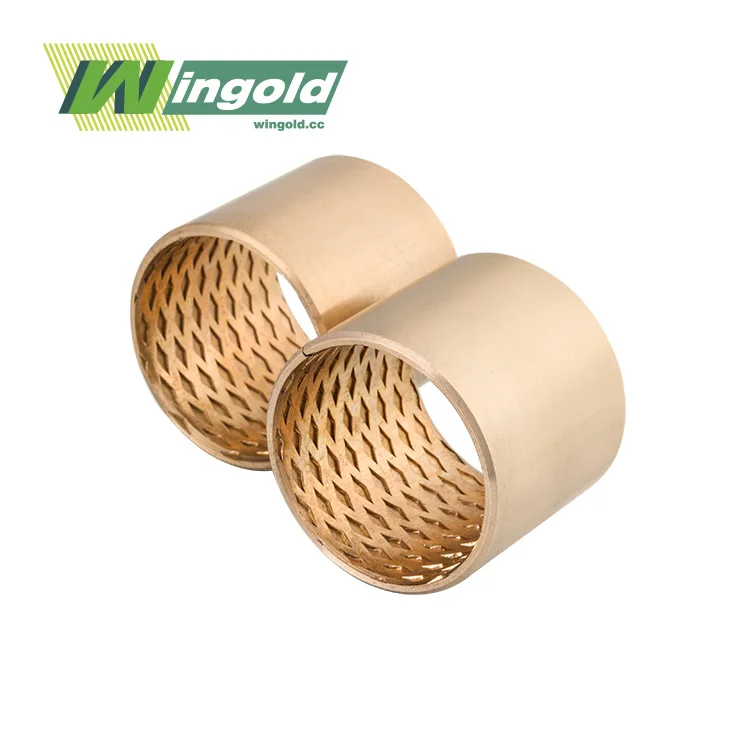
The Unique Properties of Composite Sleeve Bearings
Composite sleeve bearings are engineered to deliver outstanding performance in demanding environments. These bearings combine the robustness of a metal substrate with a low-friction composite coating, creating a unique blend of durability and smooth operation. The self-lubricating properties of composite bearings ensure reduced maintenance requirements and extended service life, making them an excellent choice for various industrial applications.
Material Composition and Structure
The typical structure of a composite sleeve bearing consists of a steel back, sintered porous bronze powder, and a layer of modified polyformaldehyde (POM). This layered composition provides a balance of strength and low friction. The porous bronze layer is often designed with oil indentations, enhancing the bearing's self-lubricating capabilities.
Performance Specifications
Composite sleeve bearings boast impressive performance specifications. They can handle maximum load pressures of up to 70N/mm² and operate within a temperature range of -40°C to 130°C. The friction coefficient typically ranges from 0.05 to 0.25, ensuring smooth operation. These bearings can achieve a maximum sliding speed of 2.5m/s and have a maximum allowable PV value (pressure-velocity) of 22N/mm²·m/s under dry conditions.
Dimensional Versatility
One of the key advantages of composite sleeve bearings is their dimensional versatility. They can be manufactured with inner diameters ranging from 10mm to 500mm, wall thicknesses from 1mm to 50mm, and lengths from 10mm to 1000mm. This flexibility allows for customization to suit specific application requirements across various industries.
Industries Benefiting from Composite Sleeve Bearings
The unique properties of composite sleeve bearings make them invaluable across a wide spectrum of industries. Let's explore some of the sectors that rely heavily on these innovative components.
Automotive Industry
In the automotive sector, composite sleeve bearings are crucial components in various applications. They are utilized in steering systems, suspension components, and transmission assemblies. The bearings' ability to operate under high loads and provide smooth, low-friction movement contributes to improved vehicle performance and fuel efficiency. Their self-lubricating nature also reduces maintenance requirements, enhancing the overall reliability of automotive systems.
Aerospace and Aviation
The aerospace industry demands components that can withstand extreme conditions while maintaining high performance. Composite sleeve bearings meet these requirements admirably. They are used in aircraft landing gear, flap systems, and engine mounts. The bearings' ability to operate at high temperatures and their resistance to wear make them ideal for these critical applications, ensuring safety and reliability in aviation.
Heavy Machinery and Construction Equipment
In the realm of heavy machinery and construction equipment, composite sleeve bearings play a vital role. They are utilized in excavators, bulldozers, and cranes, providing smooth operation for pivoting joints and hydraulic systems. The bearings' high load capacity and ability to withstand contamination from dirt and debris make them indispensable in these rugged environments.
Renewable Energy Sector
The renewable energy sector, particularly wind energy, relies heavily on composite sleeve bearings. These bearings are used in wind turbine pitch and yaw systems, where they must operate reliably under varying loads and environmental conditions. Their low maintenance requirements and long service life make them ideal for use in remote or hard-to-access installations, such as offshore wind farms.
Advantages of Composite Sleeve Bearings in Industrial Applications
The widespread adoption of composite sleeve bearings across various industries is attributed to their numerous advantages. These bearings offer a unique combination of properties that make them superior to traditional bearing solutions in many applications.
Maintenance-Free Operation
One of the most significant advantages of composite sleeve bearings is their self-lubricating nature. This characteristic eliminates the need for continuous lubrication, drastically reducing maintenance costs and downtime. In industries where equipment accessibility is limited or maintenance is challenging, such as offshore wind turbines or aerospace applications, this feature is particularly valuable.
Enhanced Performance and Efficiency
Composite sleeve bearings boast a low friction coefficient, typically ranging from 0.02 to 0.25. This low friction results in smoother operation and significant energy savings across various applications. In automotive and aerospace industries, where fuel efficiency is paramount, the use of these bearings can contribute to overall system performance improvements.
Chemical Resistance and Durability
The composite materials used in these bearings offer excellent resistance to chemicals and corrosion. This makes them suitable for use in harsh environments, such as in chemical processing plants or marine applications. Their durability ensures consistent performance over extended periods, even under challenging conditions.
Vibration Dampening and Noise Reduction
Composite sleeve bearings have the inherent ability to absorb vibrations and reduce noise. This characteristic is particularly beneficial in applications where smooth, quiet operation is crucial, such as in automotive interiors or precision machinery. The vibration dampening properties also contribute to improved equipment longevity by reducing wear and fatigue on associated components.
Lightweight Design
The lightweight nature of composite sleeve bearings offers several advantages. In industries like aerospace and automotive, where weight reduction is a constant goal, these bearings contribute to overall system efficiency. Their light weight also simplifies installation and handling, potentially reducing assembly times and costs.
Thermal Stability
Composite sleeve bearings maintain dimensional stability across a wide temperature range, typically from -40°C to +280°C. This thermal stability ensures consistent operation in various environments, from the frigid conditions experienced by aerospace components at high altitudes to the high temperatures encountered in industrial machinery.
Conclusion
Composite sleeve bearings have become indispensable components across numerous industries due to their unique combination of properties. From automotive and aerospace to heavy machinery and renewable energy, these bearings offer solutions to complex engineering challenges. Their ability to provide maintenance-free operation, enhance system efficiency, and withstand harsh environments makes them a preferred choice for many industrial applications. As technology continues to advance, the role of composite sleeve bearings is likely to expand further, driving innovation and performance improvements across various sectors. For more information about our composite sleeve bearings and how they can benefit your specific application, please contact us at info@wingold.cc.
FAQs
What is the typical lifespan of a composite sleeve bearing?
The lifespan of a composite sleeve bearing varies depending on the application and operating conditions. However, they generally offer longer service life compared to traditional bearings due to their self-lubricating properties and wear resistance.
Can composite sleeve bearings operate in underwater environments?
Yes, many composite sleeve bearings are designed to operate effectively in underwater environments due to their excellent corrosion resistance and self-lubricating properties.
Are composite sleeve bearings suitable for high-speed applications?
While composite sleeve bearings can handle moderate speeds, they may not be the best choice for extremely high-speed applications. The maximum speed depends on the specific bearing design and operating conditions.



